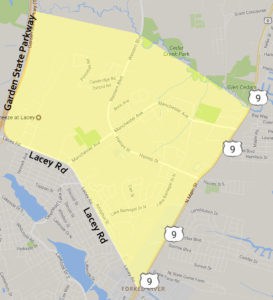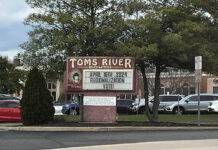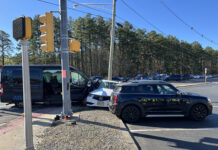
LACEY – Lacey schools cut busing for older students who live within 2 miles of their schools, offering those parents an option to pay an annual subscription to continue busing.
School officials said they will continue to do the busing that is required by law. However, the courtesy busing of other students had to be stopped.
A walking zone was drawn in town, boxing in an area from Route 9 to the Garden State Parkway, and from Lacey Road to the town’s northern border. All of the children living within this area would be affected. Those living outside those borders would not be affected.
Transportation will still be provided for free for children in kindergarten through fourth grade; 5th and 6th graders living outside the walking zone; 7th and 8th graders who live more than 2 miles from school, and 9th through 12th graders who live more than 2.5 miles from school; and educationally disabled students.
Applications are available from the district for subscription busing up until June 30. If residents want their children to be on the bus, they will have to pay for the subscription service, which amounts to $180 a year or $1 a day. Families who are eligible for free or reduced meals can receive busing at a reduced rate. There is a maximum cost of $360 per year per family, no matter how many children are transported.
The new policy does not affect school sponsored activities or field trips.
A few residents spoke against the new policy, which would start in September, at the April 24 Board of Education meeting.
“When you get to the end of our street, there are no sidewalks,” said resident John Szafranski of Jacqueline Court. “You have to cross Lake Barnegat Drive on Haines Street. That intersection is a death trap. I’m not letting my kids walk on Haines with no sidewalk.”
He wanted to know if there would be more crossing guards.
Superintendent Craig Wigley said much of that was taken into consideration in crafting this policy. There will be improvements to crosswalks and more crossing guards as needed.

“We will absolutely hire crossing guards if need be,” he said.
Szafranski wanted to know what went into the planning of this policy. “You want us to take your word for it. Who deemed what safe? What steps did you take to make it safe?”
Wigley said the plan follows guidelines set forth by the state Department of Education. When he arrived in Lacey at the beginning of last school year, there was a “quagmire” of busing. This change will marry policy with practice.
“There’s a multitude of options to transport yourself,” he said. Children can walk, have a parent drive, or subscribe.
However, Wigley said he was not able to provide every detail of the new walking plan until the district knows how many children are subscribing, and where they live. After looking at those figures, they will determine where the crossing guards and improvements will be done.
Megan Anderson, a 13-year-old student, prepared a statement to read to the school officials. She said that she will have to walk to Lacey Middle School because both of her parents work full time. She was diagnosed with asthma when she was 3.
“Thanks to your decision, I will walk to school not knowing if I will have an asthma attack,” she read. “Not to mention that more than half of my walk doesn’t have a sidewalk and also has only about two street lights.”
She asked if the school officials ever walked from the border of the map all the way to the middle or high school.
Her mother, Laura Anderson, said her daughter has a half mile walk, on a road with a 40-mile-per-hour limit and no sidewalks. In rain, snow, and ice, that will be a very dangerous road for kids to walk down.
Additionally, although the school officials might deem a certain route safer than others, that does not mean that the children will choose those routes.
“You can’t force children to walk certain roads,” she said.
Board members then spoke about the change.
“It’s hard to gauge who is subscribing and who is not. We have to see where the danger is. I know Mr. Wigley talks with the chief all the time and we’ll figure it out,” board member Nicholas Mirandi said.
“My kids live in that walking zone,” board member David Silletti said. “There has been a lot of debate and argument on these issues.” There was a lot of discussion about lighting and sidewalks.
After the meeting, Wigley said that tax dollars were paying for the courtesy busing, and the state doesn’t reimburse.
“They received courtesy busing for some time, and it’s an entitlement we can no longer afford,” he said.






